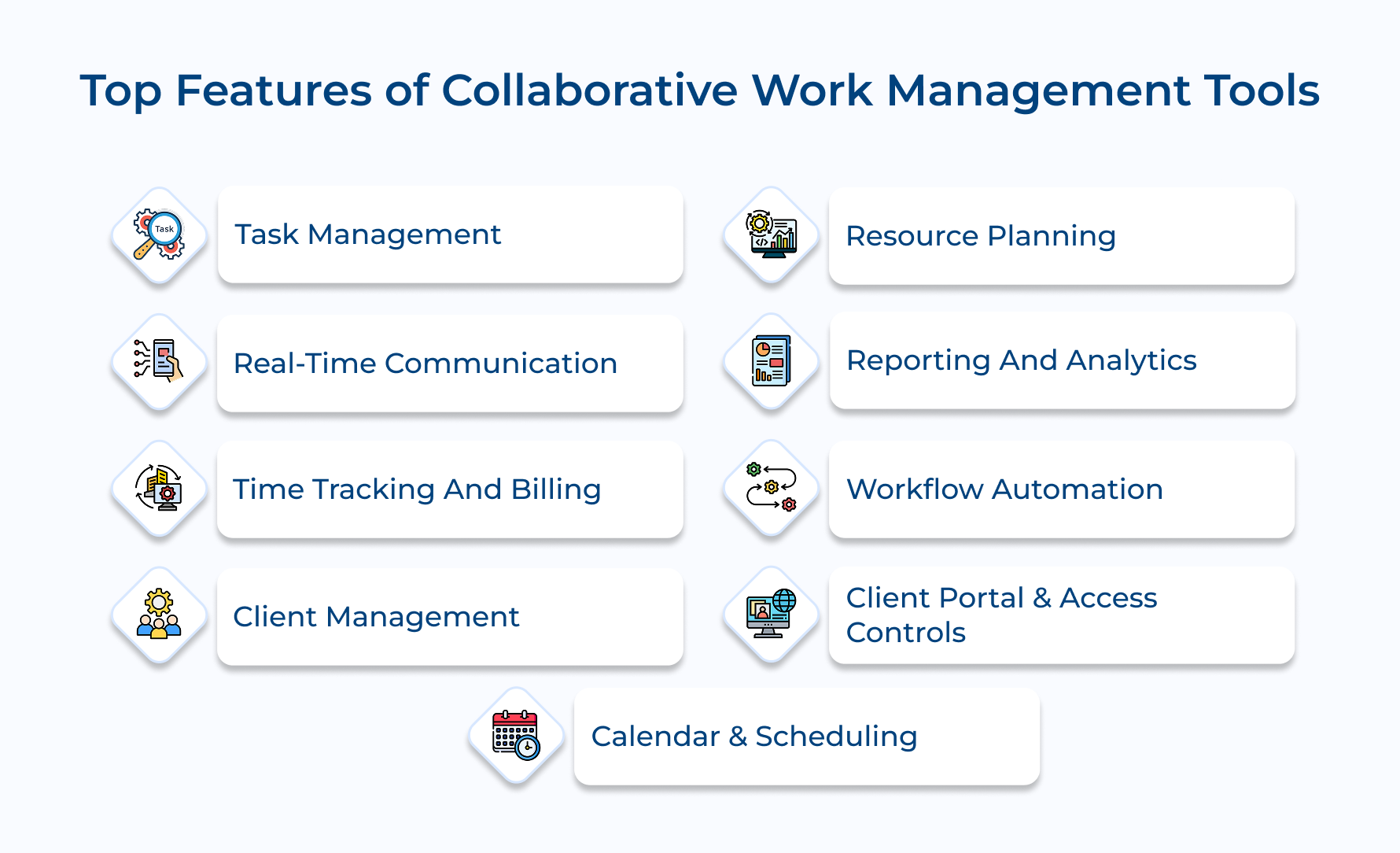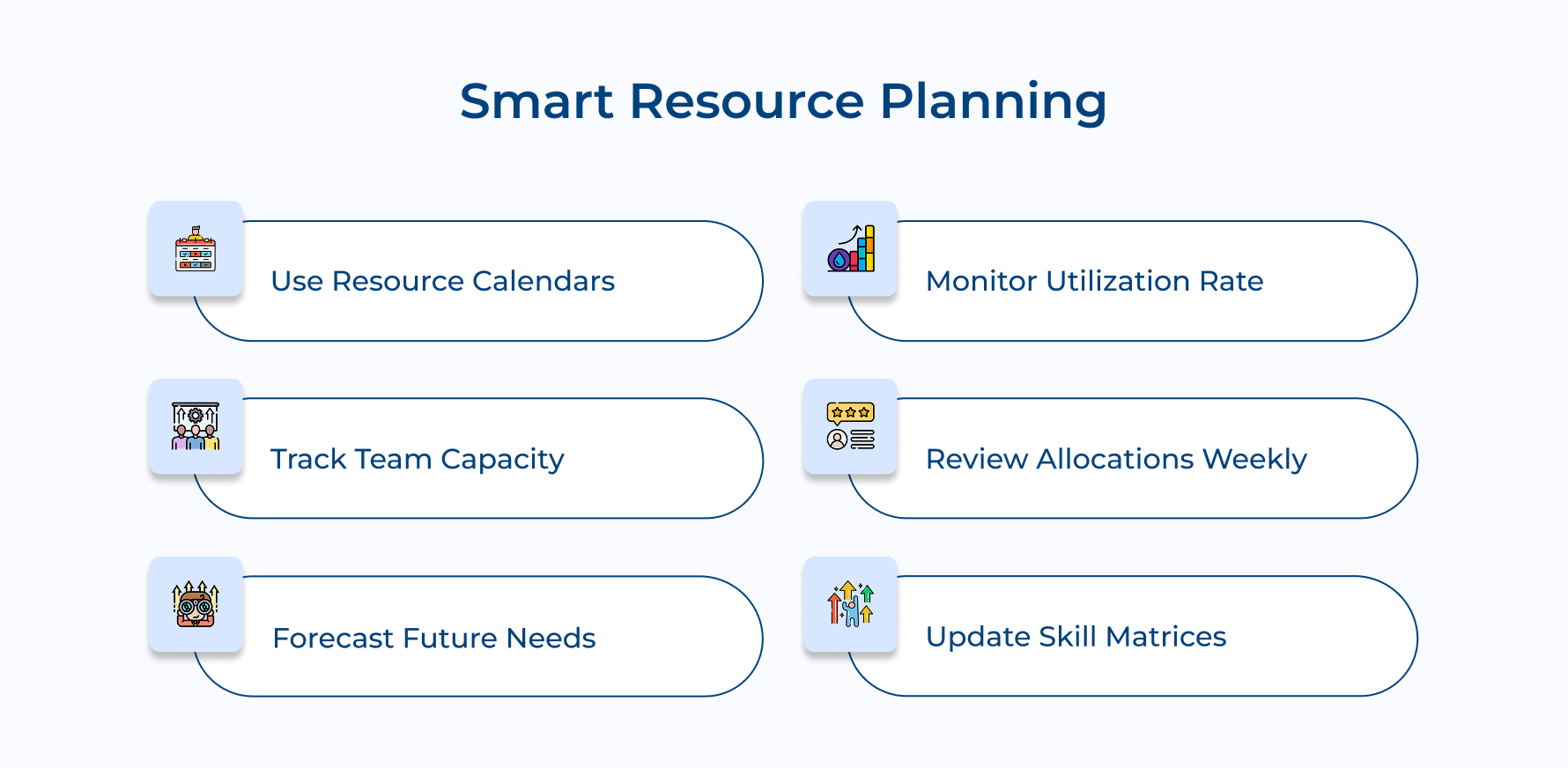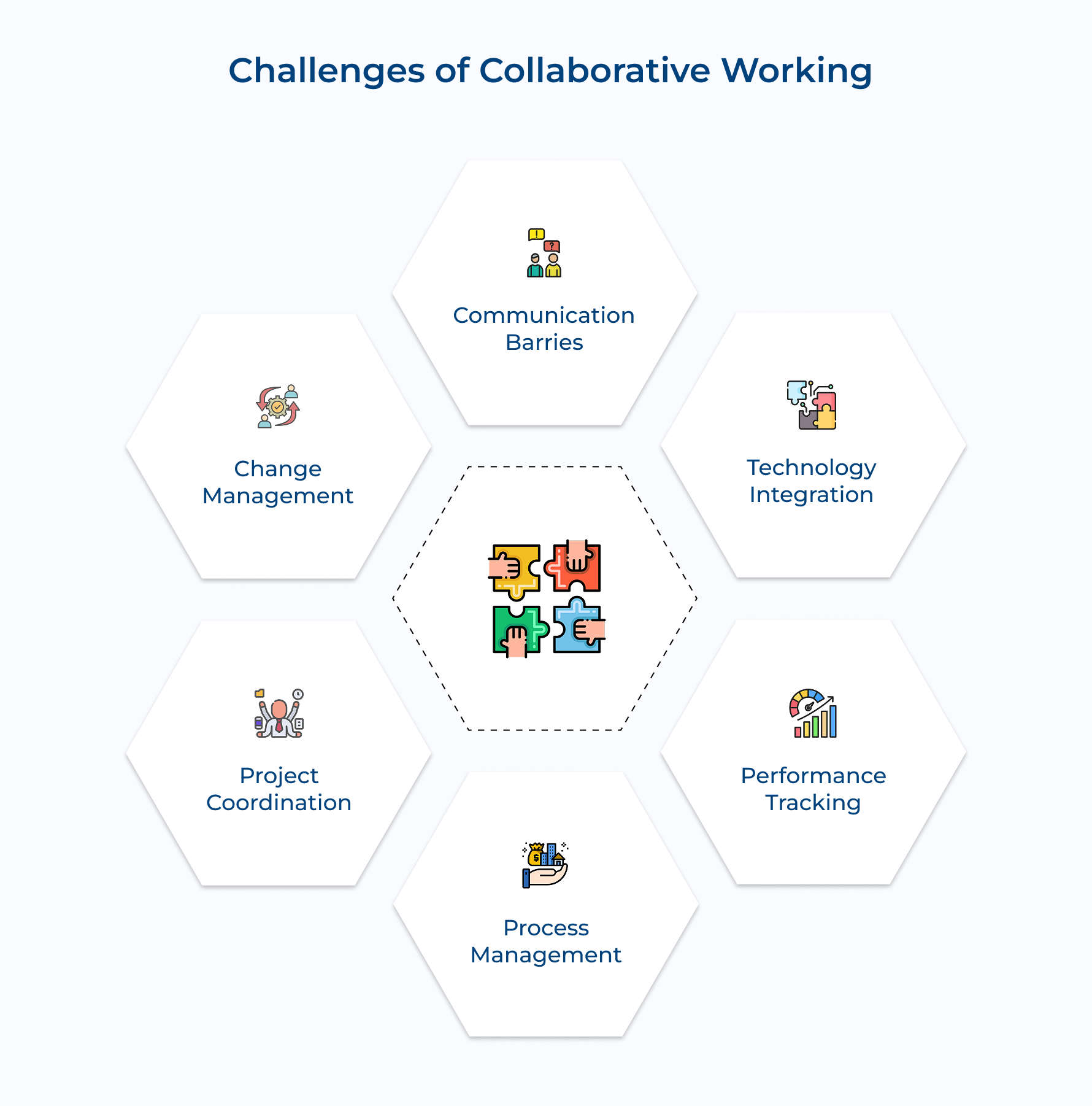The Ultimate Guide to Collaborative Work Management (CWM)
- What Is Collaborative Work Management (CWM)?
- Benefits of Collaborative Work Management
- Top Features of Collaborative Work Management Tools
- Challenges of Collaborative Working
- Best Practices for Implementing Collaborative Work Management
- CWM: A Catalyst for Business Transformation
- FAQs about Collaborative Work Management

Key Highlights:
- Real-time Communication tools ensure seamless collaboration across teams and clients.
- Better Client Management through transparent workflows and real-time feedback access.
- Collaborative work management utilizes feedback mechanisms through regular check-ins to improve workflows.
When teams click, they innovate faster, meet deadlines, and keep clients happy. But let’s face it—many organizations struggle to get collaboration right, leading to missed chances and stalled projects.
That’s where Collaborative Work Management (CWM) steps in. It’s all about using the right tools and strategies to streamline communication as well as bring teams together.
CWM is one significant factor that sticks projects and people together! Let’s now uncover how CWM can transform the way your team works, boost productivity, and create a more efficient workplace.
What Is Collaborative Work Management (CWM)?
Collaborative Work Management (CWM) refers to a systematic approach and set of tools that enable teams to plan, coordinate, execute, as well as track work together. It combines project management principles with real-time collaboration features to help organizations streamline their workflows and enhance team productivity.
At its core, CWM provides a centralized platform where team members can communicate, share documents, assign tasks, monitor progress, and make decisions collectively, regardless of their physical location. This approach breaks down traditional silos between departments and enables cross-functional collaboration by making work processes transparent.
Key objectives:
- Optimize resource utilization by providing real-time visibility into team capacity and workload distribution.
- Enhance team collaboration through centralized communication channels and document-sharing capabilities.
- Accelerate project delivery by streamlining workflows and eliminating bottlenecks in decision-making processes.
Benefits of Collaborative Work Management
Whether it’s hitting deadlines, improving communication, or keeping everyone on the same page, CWM brings a lot to the table. Let’s explore its wide range of benefits.
Enhanced Productivity
With all project tasks, deadlines, and resources in one place, agencies can streamline their critical workflows effortlessly. Team members spend less time digging for information or juggling tools, freeing them up to focus on delivering top-notch client work and hitting deadlines with ease.
Improved Team Coordination
CWM platforms bring creative, account management, and technical teams together seamlessly. Built-in communication tools and real-time updates keep everyone on the same page, reducing miscommunication while avoiding costly mistakes.
Better Client Management
Collaborative work management software creates clear workflows that clients can access to track progress, give feedback, and approve deliverables. Transparency builds trust, boosts satisfaction, and strengthens long-term relationships.
Increased Accountability
Clear task assignments and tracking make it simple for team leads to oversee individual contributions as well as project progress. Early identification of bottlenecks ensures deadlines are met and quality stays consistent across all client work.
Cost-effective Solutions
Combining multiple tools into one platform cuts down on software costs while boosting efficiency. Plus, scalable cloud-based solutions let agencies adjust spending based on team size and project needs.
Top Features of Collaborative Work Management Tools
Understanding the essential features of CWM tools helps businesses select the right solutions to enhance collaboration along productivity. Here are the top features.
1. Task Management
Managing multiple client projects simultaneously requires a structured approach to task management, ensuring deadlines are met, resources are utilized effectively, and team members stay aligned. Here’s how agencies can streamline their project workflows:
1. Use Project Templates
- Develop standardized templates for recurring services.
- Include predefined task lists, timelines, and dependencies.
- Reduce setup time and ensure consistency across projects.
2. Assign Tasks Strategically
- Allocate team members based on their skills and current workload.
- Clearly define roles and responsibilities to prevent overlaps or gaps.
3. Visualize Workflows
- Use tools like Kanban boards or list views to map out project stages.
- Identify bottlenecks early and address them proactively.
4. Track Progress in Real-Time
- Implement a project management tool with real-time tracking features.
- Monitor task completion rates and adherence to milestones.
Break projects into smaller milestones to track incremental progress, and establish dependencies to streamline task sequences.
2. Real-time Communication
Effective communication is the backbone of successful project management, ensuring all stakeholders are aligned, informed, and proactive. Establish seamless communication workflows using the following structure:
1. Dedicated Communication Channels
- Internal Teams: Set up channels for brainstorming, updates, and issue resolution.
- Clients: Create exclusive channels to share progress, address feedback, and maintain transparency.
- File Sharing: Use cloud-based tools integrated into communication platforms for easy access to resources.
2. Leverage Smart Tools
- Use @mentions to alert specific individuals about critical updates or decisions.
- Maintain threaded conversations for focused discussions on specific topics.
- Archive communication history for easy reference and continuity in long-term projects.
A quick tip: Use distinct channels for overarching project strategies and routine task discussions. This keeps conversations relevant and avoids clutter.
3. Time Tracking and Billing
Accurate time tracking ensures clients are billed correctly, projects stay profitable, and teams remain productive. It also gives you valuable insights to make smarter decisions about resource allocation, pricing, and project timelines.
Start by tracking time for individual tasks. The step helps you see exactly where the hours go and keeps your team focused. Use the data to generate automated invoices, monitor budgets in real-time, and identify trends that can fine-tune your project estimates.
Here’s a pro tip: make time tracking a daily habit. Integrate it into your existing workflows and set up automated reminders, so it doesn’t feel like a chore.
Don’t forget to review the data monthly! This is your chance to spot efficiency gaps, streamline processes, and tweak your estimates to reflect reality better. Small adjustments here can make a big difference down the line.
4. Client Management
Building strong client relationships is all about staying organized and making your clients feel valued. Clear communication, deliverable tracking, and smooth feedback management go a long way in maintaining trust.
Imagine working with a client on a campaign. A centralized client management system can be your best friend here. It helps you store all client details, track past conversations, and easily manage approvals as well as feedback.
Here’s an idea: create client-specific workflows or templates. For example, if you’re onboarding a new client, have a ready-made template that outlines every step—information gathering, setup tasks, and timelines. It saves time and shows you’ve got everything under control.
Another tip? Schedule regular check-ins to stay aligned and keep communication flowing. Throw in automated satisfaction surveys now & then to catch any concerns early and show you care about their experience.
5. Resource Planning
Effective resource planning keeps your team balanced, prevents burnout, and ensures projects stay profitable. It helps allocate tasks based on skills and availability while making smart hiring decisions.
Set up resource calendars, track team capacity, and forecast future needs. Monitor utilization rates to adjust workloads as well as maintain productivity. By staying proactive, you’ll keep things running smoothly and avoid overload.
Implementation tips:
- Maintain updated skill matrices for team members to facilitate quick and effective resource allocation.
- Review resource allocation weekly to identify potential overload situations before they become problems.
6. Reporting and Analytics
Data-driven insights are essential for improving efficiency, showcasing value to clients, and making informed business decisions. Regular reporting helps track KPIs, spot trends, as well as refine service delivery.
Set up automated reports to track project progress, resource usage, budgets, and team productivity. Create custom dashboards for different stakeholders and export data for in-depth analysis.
Define key metrics for each group and establish automated reporting schedules. Make it a habit to review analytics monthly to spot patterns and uncover opportunities for improving processes.
7. Workflow Automation
Automation of manual work cuts down on errors and ensures consistency. It lets your team focus on more important tasks while maintaining high standards. Here’s how to make it work for you:
- Automate repetitive tasks: Set up workflows for common tasks to save time and effort.
- Approval processes: Streamline approvals with automation to speed up decision-making.
- Status updates and reports: Automate routine updates and report generation for consistent communication.
- Notifications and reminders: Keep projects on track by automating reminders and notifications.
A quick tip: Start small—automate simple tasks first, then expand as you get feedback from your team.
8. Client Portal & Access Controls
Secure client access to project information promotes transparency and reduces communication overhead. It enables self-service for routine information while maintaining appropriate security controls.
Provide clients with customized dashboards showing project progress, deliverables, and approvals. Set up different access levels for various stakeholders and maintain audit trails of all interactions.
9. Calendar & Scheduling
Coordinated scheduling ensures efficient use of team time, reduces conflicts, and helps maintain project timelines. It facilitates smooth collaboration across teams and with clients.
Integrate team calendars, schedule meetings, and deadlines, set up recurring events, as well as manage resource availability. Sync with external calendar systems for seamless coordination.
Implement a clear color-coding system for different types of calendar events to improve visibility. Set up buffer times between meetings to allow for preparation and follow-up tasks.
Challenges of Collaborative Working
While collaboration offers many benefits, it also presents a fair share of challenges that can hinder success. Let us explore how it impacts business and how to resolve them.
1. Communication Barriers
Teams face difficulties in maintaining clear, consistent communication across different time zones, languages, and work cultures. Misunderstandings and information gaps can lead to project delays as well as errors.
Impact:
- Delayed decision-making processes
- Misaligned project objectives
- Reduced team efficiency
- Increased risk of errors
Solutions:
- Implement standardized communication protocols and channels for different types of messages.
- Use visual collaboration tools for complex discussions.
- Schedule regular sync-ups accounting for different time zones.
- Document all important decisions and discussions.
2. Technology Integration
Organizations struggle with integrating multiple tools and platforms, leading to data silos as well as workflow disruptions. Team members often face technical difficulties with new tools.
Impact:
- Fragmented workflows
- Data inconsistency
- Reduced productivity
- User resistance
Solutions:
- Choose platforms with robust integration capabilities.
- Provide comprehensive training and support, especially for complex projects.
- Establish clear guidelines for tool usage.
- Regular system audits and updates.
3. Performance Tracking
Measuring individual and team contributions becomes more complex in collaborative environments where work is interconnected.
Impact:
- Difficulty in performance evaluation
- Unclear accountability
- Motivation issues
- Resource allocation challenges
Solutions:
- Establish clear metrics for collaborative work.
- Regular performance reviews.
- Team-based incentives.
- Transparent tracking systems.
4. Process Management
Managing complex workflows across different teams and departments while maintaining efficiency as well as quality standards proves challenging.
Impact:
- Workflow bottlenecks
- Quality inconsistencies
- Resource allocation issues
- Project delays
Solutions:
- Implement clear workflow documentation.
- Establish quality checkpoints.
- Regular process reviews and optimization.
- Automated tracking and notifications.
5. Project Coordination
Coordinating multiple stakeholders, timelines, and deliverables across different teams as well as locations becomes increasingly complex.
Impact:
- Timeline misalignment
- Dependency issues
- Communication overhead
- Quality inconsistencies
Solutions:
- Use project management tools
- Clear milestone tracking
- Regular coordination meetings
- Standardized reporting formats
6. Change Management
Managing changes in collaborative workflows while maintaining productivity and team engagement proves challenging.
Impact:
- Resistance to change
- Productivity dips
- Process inconsistencies
- Team frustration
Solutions:
- Develop comprehensive change management plans.
- Regular stakeholder communication.
- Phased implementation approach.
- Continuous feedback and adjustment.
Best Practices for Implementing Collaborative Work Management
Implementing CWM effectively requires strategic planning and execution. Here are the best practices to ensure successful integration.
Start with a Clear Strategy and Goals
Define specific goals that align with your agency’s overall business objectives. Take a look at your current workflows, identify any pain points, and set measurable success metrics.
Map out a detailed implementation timeline that accounts for client commitments and your team’s capacity. Be realistic about adoption timelines and improvement milestones.
Choose the Right Tools
When selecting Collaborative Workflow Management (CWM) tools, pick ones that blend smoothly with your current systems and meet your agency’s needs.
Focus on features that will help improve client service, like time tracking, project templates, and client portals. Make sure the tools are scalable and fit within your budget, keeping your future growth in mind.
Focus on User Adoption
Getting your team on board is key. Set up a strong onboarding program with role-specific training and easy-to-follow documentation. Find champions in each department who can support their teammates during the transition. Quick-reference guides and ongoing support will help keep everyone using the tools consistently.
Utilize Feedback Mechanisms
Stay in touch with your team and clients. Set up regular check-ins to gather feedback on the new processes, and create anonymous channels for honest opinions. Use surveys and analytics to spot any areas of friction or where workflow improvements can be made.
Monitor and Measure Progress
Keep track of key performance indicators like project delivery, team productivity, and client satisfaction. Compare metrics before and after the implementation to show the return on investment (ROI). Regular reports will help highlight improvements and areas that need attention. Adjust your strategies based on what the data tells you.
Optimize Resource Allocation
Regularly review your team’s workloads while adjusting assignments based on their capacity and skill sets. Resource forecasting is important to avoid bottlenecks and keep things running smoothly. Standardize how you request and allocate resources for multiple client projects to make the process more efficient.
Document and Share Knowledge
Create a central knowledge base where your team can access best practices, templates, and process docs. Encourage everyone to share insights and lessons learned from their client projects. Keep the documentation updated to ensure consistency and to cover common procedures or client-specific needs.
CWM: A Catalyst for Business Transformation
Collaborative Work Management (CWM) empowers professional services by enhancing teamwork, streamlining workflows, and improving client engagement. Leveraging CWM tools build real-time collaboration, enabling teams to share insights and resources effortlessly.
The approach not only increases efficiency but also drives innovation, allowing professionals to deliver higher-quality services. As client demands evolve, CWM ensures that teams can adapt quickly, making them more agile.
Embracing CWM ultimately positions professional services to thrive in competition, enhancing both performance and client satisfaction. The future of professional services is collaborative, and CWM is key to unlocking that potential.
Limit time — not creativity
Everything you need for customer support, marketing & sales.
Neeti Singh is a passionate content writer at Kooper, where he transforms complex concepts into clear, engaging and actionable content. With a keen eye for detail and a love for technology, Tushar Joshi crafts blog posts, guides and articles that help readers navigate the fast-evolving world of software solutions.



